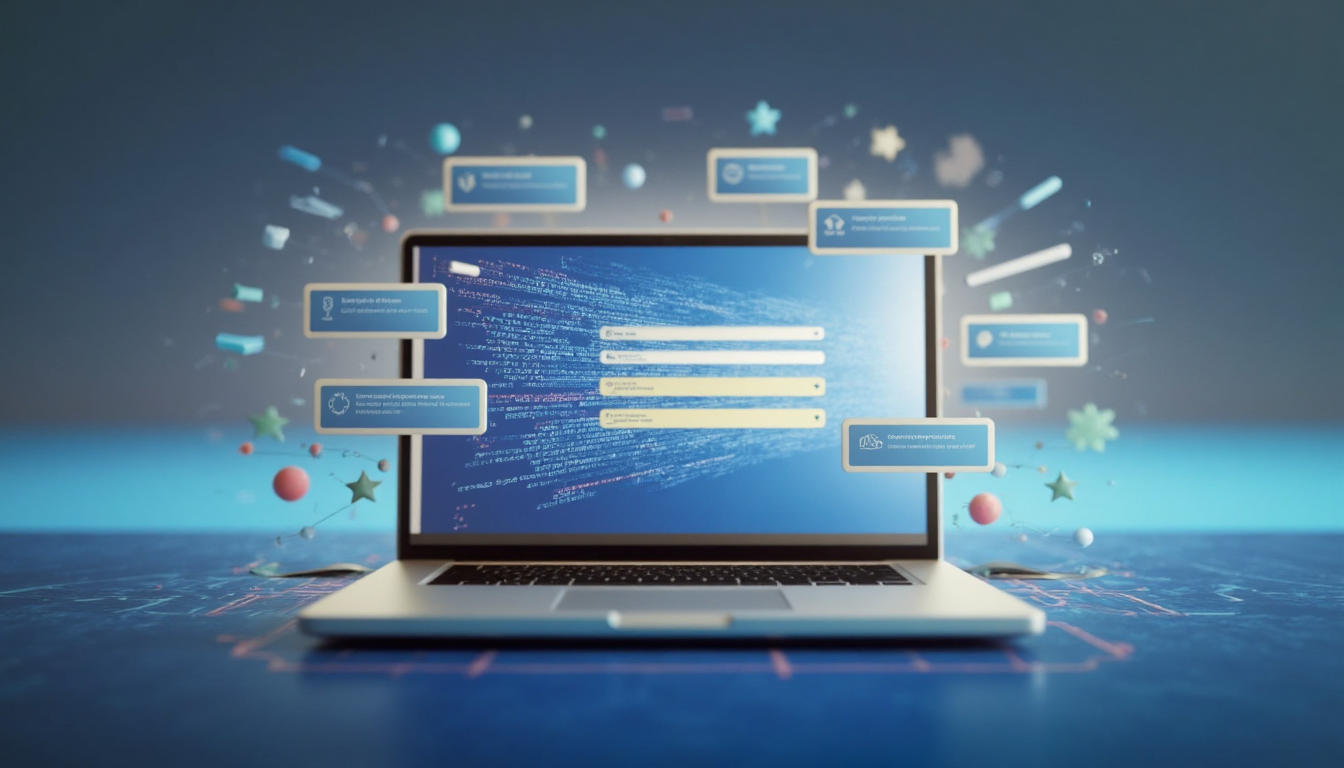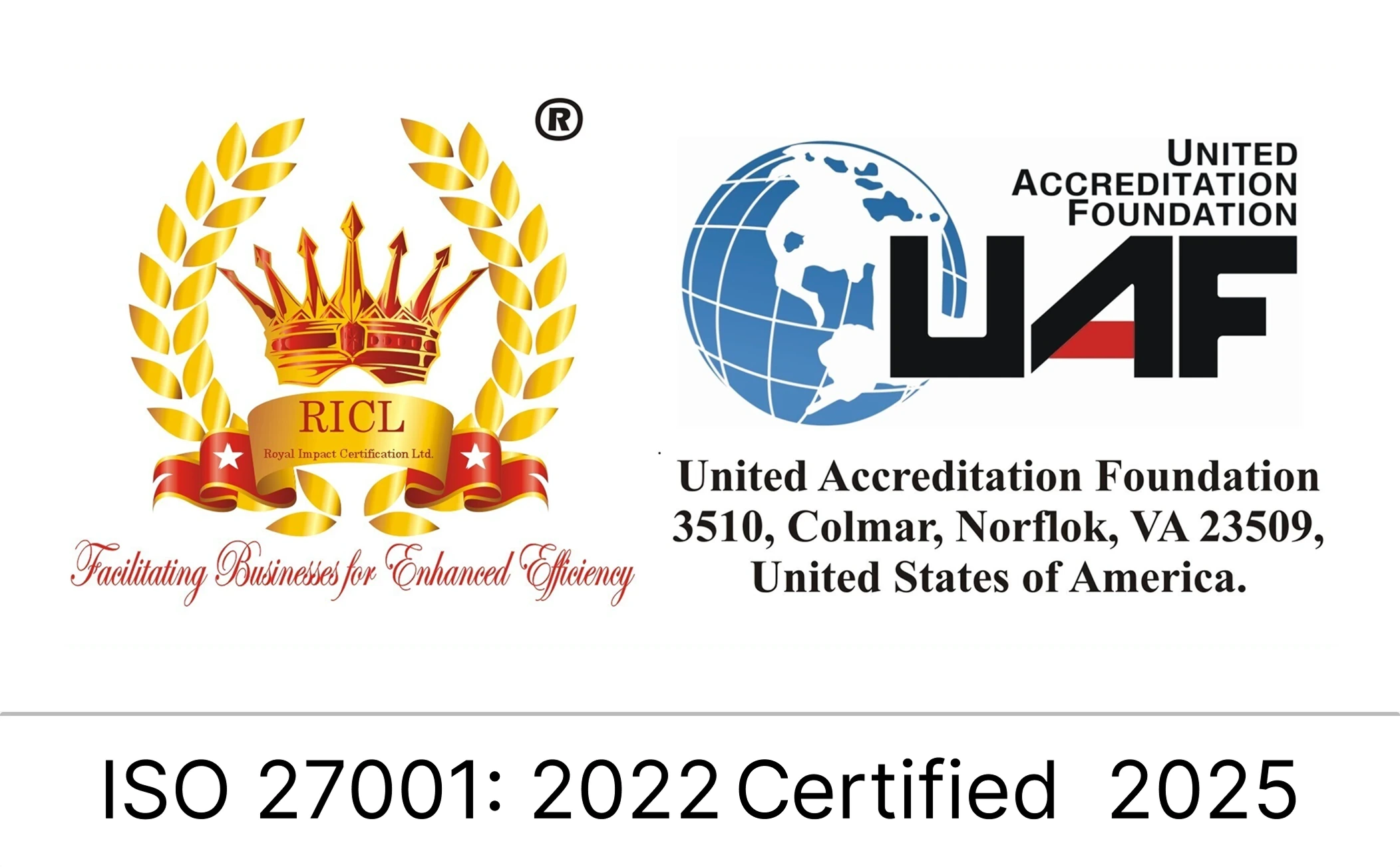AI vs. Manual Security Audits

How confident are you in your last security audit?
That question should hit hard because for most teams, the honest answer is: not very. The process is manual. It’s slow. It varies depending on who’s doing it. And it doesn’t scale when your enterprise is pushing dozens or hundreds of releases every month.
Now, AI is stepping in. Not just as a helper, but as a potential replacement for large parts of the manual audit process. It’s fast and consistent, and it doesn’t get tired or distracted. But… can it actually understand the complexity of enterprise risk? Can you trust it to make calls that affect compliance, customer safety, and the bottom line?
Table of Contents
- What Manual Security Audits Get Right (and where they fall short)
- How AI is Reshaping the Security Audit Process
- Where Human Expertise Still Matters
- The Case for a Hybrid Approach
- AI Won’t Fully Replace Human Expertise
What Manual Security Audits Get Right (and where they fall short)
Manual audits still bring serious value. When done right, they deliver insights AI still can’t fully replicate. If only they don’t slow everything down, leave room for error, and buckle under scale.
What manual audits get right
- They understand context deeply. Human reviewers (especially experienced ones) get your architecture, your business model, and the real-world impact of a security flaw. They know the difference between a theoretical risk and a real one, and they can factor in how systems interact across environments, products, and regions.
- They use judgment in ambiguous scenarios. Not everything in security is black and white. There are edge cases, weird configurations, and complex data flows where a purely rules-based approach would fail. Manual audits allow for case-by-case decisions, backed by experience and threat modeling expertise.
- They prioritize based on business and security goals. Good auditors know what matters to the business. They can weigh risk severity against operational priorities, compliance requirements, customer impact, and timelines. This kind of prioritization is difficult to codify and even harder to scale.
- They capture tribal knowledge that’s not documented. A senior security engineer often knows about past incidents, undocumented behaviors, and architectural quirks that never made it into Confluence. That information doesn’t live in tools. It lives in people. And manual audits surface that.
Where manual audits fall short
- They don’t scale. You can’t throw humans at the problem indefinitely. As you add more systems, teams, and deployments, the overhead of doing thorough manual reviews grows exponentially. You hit a ceiling fast, especially with remote and globally distributed teams.
- They’re slow. Manual reviews take time. Reviewing code, architecture diagrams, threat models, and compliance checklists across dozens of teams doesn’t happen overnight. When release cycles are weekly (or faster), manual audits can’t keep up.
- They’re inconsistent. Different reviewers bring different approaches. Even the same reviewer can make different calls depending on workload, experience, or fatigue. That lack of standardization introduces risk, especially when the audit output informs security strategy or compliance posture.
- They’re error-prone. Security engineers are skilled, but they’re still human. When everybody’s rushing to release, details get missed. Especially in large codebases or multi-cloud infrastructure, where visibility is fragmented.
- They depend too much on a few people. When audits rely on individual experts, your risk program becomes fragile. If they leave or switch teams, you lose institutional knowledge, and with it, audit quality drops. That’s not sustainable at all!
How AI is Reshaping the Security Audit Process
Aside from speeding up security audits, AI is also reinventing how they work. You’re also getting smarter, broader, and more consistent coverage across your entire tech stack. And that shift is already happening inside forward-leaning security teams.
Speed that matches your release cycles
AI can process massive inputs: code, architecture, configs, and even threat models in seconds. For you, that means security review will no longer hold up delivery. You can trigger audits automatically during pull requests, release gates, or after infrastructure changes. Security keeps pace with engineering instead of becoming a problem.
Consistent reviews no matter who’s on the team
AI doesn’t guess. It doesn’t get tired. And it doesn’t apply different logic depending on who’s running the audit. That consistency matters when you’re tracking control coverage, measuring compliance readiness, or running security reviews across dozens of teams. Every report looks the same, follows the same rules, and hits the same depth.
Scalable coverage across large and complex environments
AI can handle codebases with millions of lines, environments with hundreds of services, and configurations across multiple cloud accounts. It doesn’t need breaks, and it doesn’t lose visibility when projects scale. This is where human-led audits fall short. AI can look at everything every time.
Real-world use cases that are already working
Continuous risk monitoring
Instead of a point-in-time snapshot, AI systems can monitor code, infra, and workflows in real-time or on every commit. You don’t need to wait for a quarterly or annual audit to catch a misconfiguration or logic flaw. Risk is tracked as it changes.
Automated threat modeling
Traditional threat modeling is slow and depends on senior security engineers. AI can parse system architecture, data flows, APIs, and configurations to auto-generate threat models in seconds. It also flags likely attack vectors and missed controls. That’s a huge win for you, who is trying to push threat modeling left.
AI-driven control mapping and gap analysis
Manually mapping your system to NIST, SOC 2, ISO 27001, or internal policies takes forever. But AI can auto-map your existing controls, configs, and code patterns against these frameworks and instantly highlight gaps. This cuts prep time for audits and simplifies compliance tracking.
Custom risk scoring tied to your business context
Advanced AI models can integrate your org’s specific risk tolerance, business priorities, and industry requirements. Findings wouldn’t just be marked as “critical” based on generic rules. They’ll be ranked based on how they actually impact your business.
Historical trend analysis
AI doesn’t just depend on the current information that it has. It will also track changes over time. You can view patterns across teams, products, or environments to identify which parts of your stack are consistently risky or improving. This will be so helpful in security strategy, hiring decisions, and resource planning.
In short, AI is changing how risk is identified, tracked, and prioritized across the entire enterprise. And it’s doing it in a way that human-only teams simply can’t match at scale.
Where Human Expertise Still Matters
AI can move fast, scan everything, and surface patterns you’d probably miss manually. But it still doesn’t understand your business. It doesn’t know what your board cares about, which risks are actually acceptable, or how to interpret gray areas in compliance. And that’s exactly where humans are still important, especially in high-stakes environments.
Humans make contextual decisions AI can’t
AI doesn’t have real-time knowledge of business architecture, regulatory boundaries, and acceptable risk trade-offs. It doesn’t understand, for example, that a particular data flow exposed to third-party vendors in a B2B integration is fine because there’s a legal agreement in place and the data is tokenized. Or that a risk flagged in an internal tool used by ops is acceptable because it’s air-gapped and doesn’t handle regulated data.
Security engineers can evaluate design choices against architectural patterns, business models, and regulatory expectations. Like how GDPR requires different handling of user PII than HIPAA or how PCI DSS scope changes depending on network segmentation. AI models don’t interpret these nuances reliably without human input and oversight.
False positives and false negatives still happen
Even advanced LLMs and AI-based security platforms can misclassify risk. For example:
- False positive: AI flags a hardcoded secret in a file that’s actually a test credential for a sandboxed environment with no real access scope.
- False negative: AI skips over a critical insecure deserialization issue in a serialized object exchange between microservices because the data format is proprietary and wasn’t trained on.
These kinds of edge cases require a human to understand both the application logic and the threat model. Without review, you risk either drowning teams in noise or missing high-impact security gaps. Validation is not optional but a part of maintaining audit integrity.
Strategic prioritization needs human input
AI can rank CVSS scores, map controls, and assign a severity level based on static rules. But it doesn’t know that you’re preparing for a SOC 2 Type 2 audit in 60 days and that audit scope prioritizes vendor risk controls and logging configurations.
It also doesn’t know that your revenue-critical product line is launching in two weeks, and the business has already accepted risk around certain deprecated dependencies to hit the deadline, with compensating controls in place.
Humans assess trade-offs. They connect technical findings to actual business impact and compliance exposure, often in real time. AI can assist with severity mapping, but priority still needs to be aligned with organizational risk appetite and current initiatives.
AI doesn’t track shifting business or regulatory context
Let’s say your company just moved from a single-region cloud deployment to a multi-region architecture across the US and EU. That changes your threat model, data residency obligations, and encryption policies. AI might still flag findings based on old context unless retrained or reconfigured.
Or maybe you’ve just entered the healthcare space, and now HIPAA compliance is in scope. The risk tied to PHI leakage, access logging, and data retention policies just went way up. But AI wouldn’t automatically know to raise the bar on those findings.
Security teams do. Humans maintain an evolving understanding of business goals, threat intelligence, regulatory shifts, and internal politics. AI can’t adjust dynamically unless someone tells it what changed and why it matters.
Human expertise is still key for stakeholder alignment
Most AI tools generate long reports with raw findings. They don’t answer the “so what” that executives, product owners, and legal teams care about. Humans translate technical risk into business risk. They negotiate remediation timelines with engineering, help legal assess disclosure obligations, and communicate real risk posture to the board.
AI doesn’t build trust across functions. Your senior security engineers and risk leaders do that by applying judgment, context, and experience to everything AI surfaces.
The Case for a Hybrid Approach
This isn’t a question of choosing between AI and human-led audits. If you’re serious about managing enterprise risk at scale, the only model that works is a hybrid one. Let AI handle the repetitive, high-volume work. Let humans drive decisions, strategy, and stakeholder alignment. That’s how you speed things up without losing depth, context, or accuracy.
AI handles the repetitive, high-volume tasks security teams don’t have time for
Start with the stuff that burns hours every week:
- Parsing infrastructure-as-code (IaC) for misconfigurations
- Mapping application assets to controls
- Checking policies against frameworks like SOC 2, ISO 27001, NIST CSF
- Generating and updating documentation
- Flagging obvious known issues in large codebases or cloud environments
AI is extremely effective at standardizing this kind of work. It scales across environments, runs 24/7, and delivers results in seconds. It’s both faster and consistent. You get clean and structured output that doesn’t depend on who’s doing the review. It also means humans aren’t stuck on repeatable tasks that don’t require deep judgment.
Humans take over where business context and judgment are required
Once the AI has done its job to flag risks, map controls, and suggest remediations. Then humans step in to make the final call. Here’s where expert judgment kicks in:
- Interpreting false positives and understanding real impact
- Prioritizing issues based on upcoming audits, roadmap, or customer requirements
- Assessing compensating controls that AI can’t detect (e.g., network segmentation, offline processes, legal coverage)
- Understanding trade-offs between speed, security, and compliance in a real business context
- Communicating risk posture to stakeholders in legal, product, and executive teams
AI will tell you that encryption is missing. A human will explain why that’s acceptable in a read-only, internal system that stores non-sensitive metadata. AI flags the issue; a human confirms or overrides the risk rating based on the real-world use case.
The result is faster audits that don’t lose context or quality
You’re not only saving time with this approach. You’re also getting better outcomes:
- Audit cycles compress from weeks to hours
- Review quality improves because human effort is focused where it matters most
- Coverage scales across every repo, cloud account, and business unit without adding headcount
- Security and risk teams can shift from manual review work to actual decision-making and strategy
This hybrid model is already being used in mature AppSec and risk teams. It delivers repeatable results, aligns with modern DevSecOps pipelines, and gives leadership better visibility into actual risk posture without wasting time or budget.
AI Won’t Fully Replace Human Expertise
AI is not making final decisions, it’s not running board updates, and it’s not taking over your risk register. But if you’re still relying entirely on manual audits to manage enterprise risk, you’re already behind.
AI supercharges the audit process. It gives you speed, scale, and consistency, while your team stays focused on what actually requires human judgment: interpreting risk, making decisions, and engaging the business.
For security leaders, the case isn’t theoretical anymore. It’s measurable. AI shortens audit cycles, increases visibility across distributed systems, and gives you a defensible, trackable way to monitor risk continuously. You’re not guessing. You’re not waiting for quarterly snapshots. You’re operating with real-time context at scale.
And just to make it clear, we’re not saying to cut people out. It’s about making them more effective. And when you combine AI-powered assessments with experienced security teams, you get a risk program that can actually keep up with the business.
Start a pilot with SecurityReview.ai to see how fast and accurate AI-powered threat modeling can be. You’ll get real results in minutes, not weeks. And you’ll immediately see where automation ends and expert input begins without compromising on quality or depth.
FAQ
Can AI fully replace manual security audits?
No. AI can handle repetitive, high-volume tasks like control mapping, misconfiguration detection, and threat modeling at scale. But manual audits are still critical for interpreting findings, making contextual decisions, and aligning security priorities with business goals. A hybrid model is the only approach that scales without sacrificing quality.
Is AI accurate enough for enterprise risk assessments?
AI is highly effective for identifying known issues, mapping controls, and surfacing potential risks—especially in large, complex environments. But it still generates false positives and misses context-specific edge cases. Human validation is necessary to ensure accuracy and relevance in high-stakes assessments.
How does AI improve the speed of security audits?
AI reduces audit time from weeks to hours or even minutes by automating steps like: Parsing infrastructure-as-code Auto-generating threat models Mapping security controls to compliance frameworks Identifying gaps across assets This frees up security teams to focus on high-impact analysis instead of manual review work.
What types of tasks should still be handled by humans?
Humans should lead: Risk prioritization based on business impact Validation of AI findings (especially false positives/negatives) Alignment with compliance requirements Stakeholder engagement and executive reporting Decision-making around accepted risks and compensating controls
Is using AI in security audits compliant with standards like SOC 2, ISO 27001, or NIST?
Yes, as long as the process includes human oversight. AI can enhance evidence gathering, control mapping, and documentation—but auditors still expect human validation and contextual interpretation. AI supports compliance, but doesn’t replace human accountability.
How do I start using AI in my security audit process?
Start with a scoped pilot. Choose an area with high audit overhead—like threat modeling, control mapping, or IaC review—and integrate an AI tool like SecurityReview.ai. Measure speed, consistency, and risk coverage compared to your current process. Then scale based on results.







.png)
.png)
.png)





